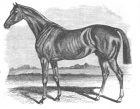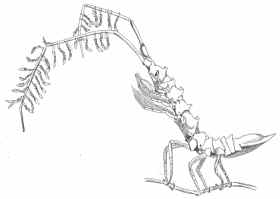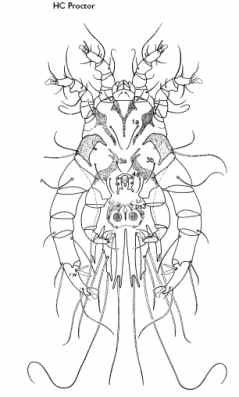Small is big, really big
Ask the folks in this town the question, “What is the most beautiful living thing?”, and I can guarantee that a good many would not even flicker an eyelid before answering, “Why, the horse, of course”. Don't get me wrong; I too marvel at the grace and poise of a well-proportioned equine as it prances with dignity and pomp around its corral. And when I remember, I like to take an apple on my daily constitutional to give to one or other of the appreciative steeds that call our neighborhood home. But rather than join the throng of those who sing the horse's praises I would prefer to bow down before the Lord of Creation who designed such a pleasing-looking creature, not to mention its utility as a carrier of men and general beast of burden. And as much as I hate being contrary, I would answer the question quite differently. As far as I'm concerned, microscopic members of the ocean's plankton must win the gold medal in the Good-Looks Olympics. Be honest, now; which of the creatures below strikes you as more pleasant to the eye?
 |
 |
I won't identify the beast on the left for you; I'm afraid you'll have to guess that one for yourself. As for the one on the right, it's a single-celled coccolithophorid. Please do yourself a favor and do a Google images search on “coccolithophores”. Then do the same with “radiolarians” and "diatoms". Maybe even search on “Ernst Haeckel's Radiolarian Array Painting”. Then be honest; which would you prefer to see tethered in your yard: Mr. Ed or a mote of plankton? Only trouble is, you'd need a powerful microscope, preferably an electron microscope, to see the latter. Of course, many more tiny beauties can be found, such as translucent "sea gooseberries", gorgeously-arrayed feather duster worms, and so on. In the case of microscopic living things, beauty is not supplied by the sculptor's chisel chipping away at the exterior surface but by the skill of the genome to build outwards from within.
When it comes to beauty, small is big, really big. Strange, isn't it.
Small isn't big only when it comes to beauty. I reckon the smaller representatives of life's kingdoms would win hands down in a bizarreness contest. Granted, tapirs and proboscis monkeys do strike one as rather weird with their Jimmy Durante proboscises. But they don't hold a candle to flies with eyes on the ends of long stalks, beetles with giraffe-like necks attached to swollen bodies, or hunchbacked springtails with pogo sticks jutting from their undersides, or the sea squirts that look like small knobby potatoes and seem determined to annoy salt-water fishermen. If you have a good hand lens and a small mesh net, you might be able to find yourself some weird isopods by sweeping the net amongst seaweed. What words can one find to aptly describe these tiny misshapen prawns? And by the way, those little tassles hanging from the antennae are the young.

If you are willing to look in even more inaccessible places you may get quite a shock. Comb out the feathers of a cassowary — if you dare — and put the scrapings under a |
dissecting microscope. With luck you will be treated to the sight of a cassowary feather mite. Now that's weird, really weird.

Cassowary feather mite (Heather Proctor)
When it comes to bizarre, small is big, very big. Why is it so?
As a corollary to strangeness, tiny things are as a rule considerably more complex in overall body form than dogs, cockatoos, snakes and frogs. Let's face it, birds have a head, two wings, a tail, and couple of legs attached to a generally pear-shaped body. And a covering of feathers, of course; but that's about it. How would you describe a frog? Or a snake. Again, don't get me wrong; what marvelous, brilliant, awe-inspiring creatures these all are. But not only do many species of plankton delight the eyes, their sheer complexity of form leaves fans of creation dumbstruck by their ingenuity of design. The complicated forms of many tinies are specifically contrived to perform equally unlikely tasks, such as enabling their hosts to walk upside down on ceilings or pierce the tough skin of a human being to get at their blood. Consider this electronmicrograph of the claw of Tydeus, a kind of barely-visible mite.

Tydeus claw (Henri Andre)
Makes a horse's hoof look just plain boring by comparison, doesn't it. When it comes to intricacy of design, small is big, really big. Exactly why smaller things should be bigger than bigger things is hard to say. All one can say is that God knew exactly what He was doing. I don't think I would ever want a horse-sized cassowary feather mite lumbering around my garden at night looking for a chicken to attach to.
Atheists will respond that the bizarreness, beauty, and intricate design of life's runts all came about through an uncontrolled explosion of an infinitely dense pinprick of pre-matter that had existed for all eternity, followed by billions of years of self-organizing, self-ordering, self-creating jostling of molecules. Yeh, yeh, yeh. And there are fairies at the bottom of my garden, too. |
![]()
![]()